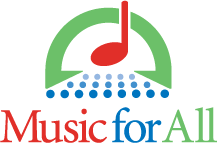Photo courtesy of the Tulane University Marching Band
Did you know that there is only one collegiate marching band in the greater New Orleans area? Maybe you didn’t know there was one at all. The current Tulane University Marching Band—TUMB for short—is only four years old; however, being a young band has its perks.
New Orleans is a city teeming with culture and a strong musical tradition; however, no college band existed in the area until recently. Here, Director Barry Spanier from Tulane University talks about the joys of rebuilding a university band program and the challenges of doing it in the face of Hurricane Katrina.
Halftime: What brought you to Tulane?
Spanier: I attended [New York University] for my Masters, and after I graduated, a job opening came up there for a new office called Center for Music Performance. The directorship position was open. I worked there for eight years.
Our daughter was born in ’99, and as she was reaching ages 3 and 4, my wife and I thought about where we could buy a house. New York City was not the place. We wanted to be someplace interesting; we had gotten used to good food and culture and architecture in New York. An opening came up at Tulane, and New Orleans offers so much in the way of those things—and the music scene is great here!
Halftime: Tell us what it was like to build up the Tulane band, especially during Hurricane Katrina?
Spanier: Tulane did not have a marching band for 30 years, but there was a student-run pep band formed in 2003 that had been doing basketball games. They put themselves, their friends and some alumni together and did this one Homecoming 2003 football game. The band also did a Mardi Gras parade in 2004. With that momentum from the volunteer band and with alumni support, the university agreed to start up a proper marching band program.
My first year was mostly about laying the groundwork—getting uniforms, purchasing equipment, working out our rehearsal and field space. The first band camp was in August of 2005. We had 25 members, but it was a very enthusiastic and well-balanced group. We had a one-week band camp that finished less than two days before Katrina made landfall. The last day of band camp was the day everyone evacuated.
Students spread out and took classes all over the country. School started back up in January ’06.
Since we did not have a football season in ’05, our first public performance was in February ’06 at Mardi Gras parades; we did four. We had 25 people that first Mardi Gras, but the next few months were about recruitment for the following fall, and we increased from 25 to 43. So, for the first football season, we had 43. The next year, there were 47. Last year, it was 63, and this year we have 83. We continue to grow, and we expect another couple of years of growth before it will level out a bit.
Halftime: Could you tell us about marching in the Mardi Gras parades?
Spanier: It’s a parade environment like no other! I’ve done Rose Parades and competition parades, but Mardi Gras is just wild. There are mobs on both sides of the street, just inches away from you. They are cheering, slapping you high fives—it’s a real party atmosphere. It’s exhausting but completely exhilarating as well. Our students are able to experience Mardi Gras from the inside out, and it’s an experience they will be able to take with them their whole lives.
We do a lot of conditioning in January because it is such a marathon. … We march 20 miles in those four parades! To train, we march in parade block around the university track. The first week, we do one mile every rehearsal. During the second week, we do two; during the third week, three. We work up to four to five miles for each rehearsal. This builds endurance, so we can be just as strong the last mile of a parade as we are the first.
Halftime: What are you most proud of regarding the band?
Spanier: We are teaching not only marching band but also life skills and leadership in the process. This is what I learned from my mentors. The big picture is teaching students to grow up, have responsibility and learn new skills.


